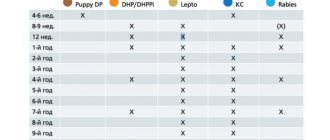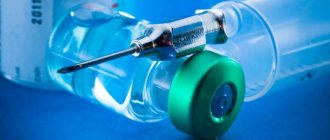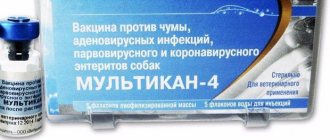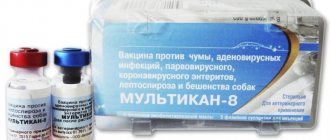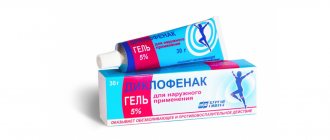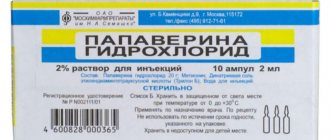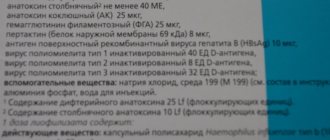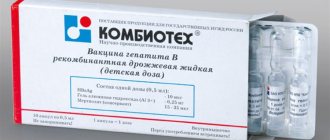Infectious diseases such as whooping cough, diphtheria, and tetanus can affect both children and adults. Moreover, recently many parents refuse to vaccinate their children, which leads to outbreaks of epidemics of childhood infections, and in the near future may cause a pandemic of these diseases. Experts insist that all children, without exception, must be immunized, and to ensure that the process is not too lengthy and vaccinations are easier to tolerate, it is worth choosing modern multicomponent vaccines that can immediately protect the body from a number of infectious diseases. These drugs include the Belgian vaccine Infanrix.
The essence of the drug Infanrix
Vaccination with Infanrix helps create specific immunity in a person to three main infections - whooping cough, diphtheria and tetanus. Sometimes such a vaccine is also called acellular pertussis to characterize its main difference from the domestic vaccine of similar action called DPT.
Content:
- The essence of the drug Infanrix
- Contraindications, side effects and complications
- Similar vaccines
The fact is that the Belgian preparation does not contain whole cells of pertussis infection. The vaccine contains destroyed parts of bacterial antigens that are capable of forming antibodies in humans. This makes the drug safer for the body and purified. After all, it has long been known that most of the adverse reactions caused by the DTP vaccine are provoked precisely by the whooping cough component. Infanrix, compared to DPT, contains only 5 of the 3000 whooping cough antigens, which reduces its allergenicity tenfold.
The fact that the use of Infanrix results in a weaker immune system has not been scientifically proven. This vaccine contains pertactin, tetanus and diphtheria toxoids, hemagglutinin and pertussis toxins. Pertactin and hemagglutinin also belong to the antigens of the causative agent of whooping cough, and the diphtheria and tetanus toxoids in Infanrix are highly purified and inactivated by high temperatures.
Vaccination with Infanrix should be carried out within the same time frame as standard DTP vaccination. The first vaccination should be given to a child at the age of 3 months. To complete the immunization cycle, vaccination is repeated at 4.5 and 6 months.
13 months after the last vaccination, revaccination is carried out using the drug Infanrix. It is important to remember that shifting the timing of vaccination due to temporary contraindications will not in any way worsen the formation of immunity in the child, so it is better, if there are any diseases or temporary restrictions, to refrain from the injection and give it when the child is completely healthy.
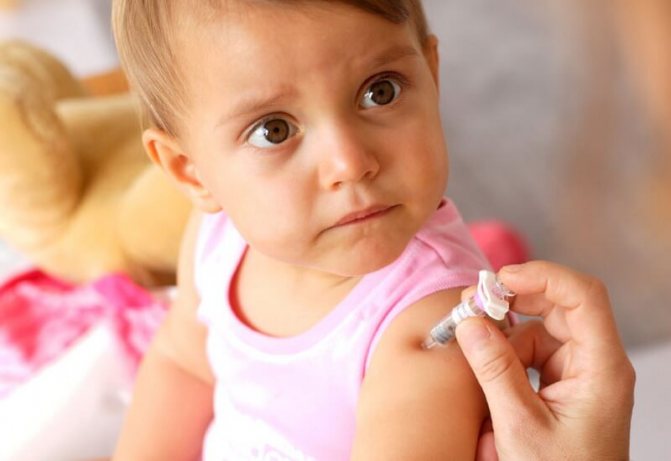
Also, the idea of some experts that if a child has been vaccinated with Infanrix has not been scientifically proven, then after it it is no longer possible to revaccinate with DTP. All specialized medical sources contain information that all vaccines against whooping cough, tetanus and diphtheria are completely interchangeable, and it is possible to replace monocomponent vaccines with multicomponent ones and vice versa.
The drug Infanrix must be injected deep into the muscle. There are no other methods of administering the vaccine. Vaccination using this vaccine can be carried out simultaneously with vaccination against other diseases, however, taking different drugs into one syringe is strictly prohibited.
Specific immunity after vaccination with this drug begins to form a month after the third vaccination. In this case, 99% of those vaccinated develop immunity to diphtheria and tetanus, and 95% to whooping cough. With revaccination at the age of 18 months, the secondary response of the immune system enhances the result after the primary triple vaccination. In general, the Infanrix vaccine forms stable immunity to all three diseases in 88% of children.
Side effect
Clinical researches
The safety profile presented below is based on data obtained from more than 11,400 patients.
When administering the Infanrix ® vaccine, an increase in the occurrence of local reactions and fever was observed when a booster dose was administered after completing the primary course of vaccination.
The incidence of adverse reactions is determined as follows: very often (≥10%), often (≥1%, <10%), sometimes (≥0.1%, <1%), rarely (≥0.01%, <0.1%), very rare (<0.01%).
From the lymphatic system:
very rarely - lymphadenopathy1.
From the nervous system and psyche:
very often - irritability, drowsiness; often - restlessness2, unusual crying; sometimes - headache1.
From the respiratory system:
sometimes - cough1, bronchitis1, rhinitis, pharyngitis.
From the digestive system:
often - loss of appetite2, gastrointestinal disorders (diarrhea and vomiting).
From the skin and its appendages:
often - itching; sometimes - rash; rarely - urticaria, dermatitis.
General and local reactions:
very often - redness, swelling at the injection site (≤ 50 mm), fever ≥38°C; often - pain2, swelling at the injection site (> 50 mm)3; sometimes - thickening at the injection site, feeling tired1, fever ≥39.1°C, diffuse swelling at the injection site, in some cases including nearby tissues.
Post-marketing observations
From the hematopoietic system:
thrombocytopenia4.
From the immune system:
allergic reactions, including anaphylactic and anaphylactoid reactions.
From the nervous system:
collapse or shock-like state (hypotensive-hyporesponsive episode), convulsions (with or without fever) within 2-3 days after administration of the vaccine.
From the skin and its appendages:
angioedema.
From the respiratory system:
apnea.
General and local reactions:
swelling at the injection site3.
Cases of otitis media have been very rarely reported.
1 - only with the introduction of a booster dose.
2 - very often when administering a booster dose.
3 - children who have undergone a course of primary vaccination with acellular pertussis vaccine have a greater risk of developing swelling at the injection site after administration of a revaccination dose compared to children who have undergone a course of primary vaccination with whole-cell DTP vaccine. These reactions resolve on average within 4 days.
3 - in children who have undergone a primary vaccination course with acellular pertussis vaccine, there is a greater likelihood of developing swelling at the injection site after administration of a booster dose, compared with children who have completed a primary vaccination course with a whole-cell vaccine. Swelling at the injection site (>50 mm) and surrounding area may occur more frequently (very common and common, respectively) when the booster dose is given between 4 and 6 years of age. These reactions resolve on their own within 4 days.
4 - described for diphtheria and tetanus vaccines.
Contraindications, side effects and complications
Doctors include the following main contraindications for using the drug Infanrix:
- the presence of allergic reactions to vaccines such as DPT;
- encephalopathy detected within a week after the previous immunization using Infanrix (while vaccination against tetanus and diphtheria continues to be carried out by other means, since this reaction is usually characteristic of the pertussis component);
- fever after previous vaccination, large swelling at the injection site, shock, convulsions.
With all the contraindications described above, doctors do not completely cancel revaccination, but try, if possible, to carry it out with the help of other vaccines.
Among the side effects when using the Infanrix vaccine, experts highlight the occurrence of local reactions at the injection sites, increased body temperature, vomiting and loose stools, loss of appetite, and allergic manifestations.
All of the above side effects can normally occur within three days after immunization. In the first half hour after the injection, you should stay in the hospital so that doctors have the opportunity to promptly stop the resulting angioedema or anaphylaxis.
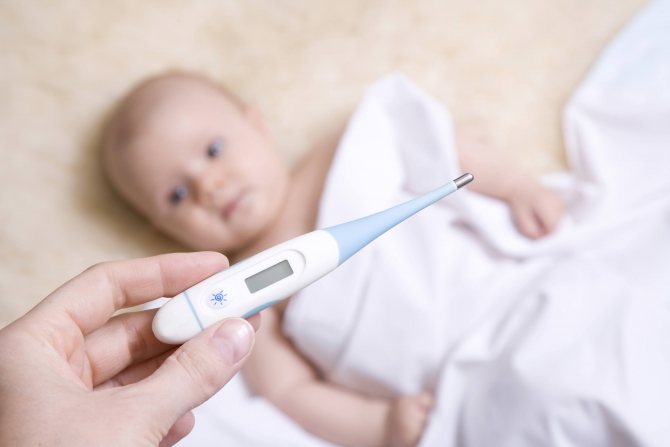
Most often, after administration of Infanrix, the child’s body temperature rises to 38-39 °C (less often up to 40 °C) and redness occurs at the injection site. These symptoms should completely go away on their own after 3 days of severity.
The temperature these days can be brought down with conventional antipyretics. At the same time, the room where the immunized child is located must be frequently ventilated, and the baby himself must be given plenty of water. If there are sudden changes in temperature, seizures or other severe symptoms, you should immediately seek medical help and not self-medicate.
All of the above complications and side effects can be avoided if you prepare for vaccination in advance. Due to the absence of whole-cell pertussis bacilli, Infanrix itself has a milder effect on the child’s body than DTP. Moreover, if each subsequent vaccination is more severe than the previous one, it makes sense to replace the vaccine with another. This can weaken the immune system's response to the drug.
It is also not recommended to feed the child before vaccination, since in this case the vaccine has a better effect on the body. Doctors also advise cleaning the child’s intestines on the eve of immunization. If this does not happen naturally, you can do a microenema.
After vaccination, you should not eat a lot right away; it is better to follow a diet that day. New foods should not be introduced into a child’s diet either before or after vaccination for at least a week. It is also not advisable to bathe your child on the day of vaccination.
Most importantly, on the eve of vaccination, the doctor must examine the child and draw up a conclusion about his complete health. In case of recent contacts with people with respiratory infections, vaccination should be postponed slightly.
Instructions for use INFANRIX™ (INFANRIX®)
Before vaccination, you should study the child’s medical history, paying attention to previous administration of vaccines and the associated occurrence of adverse reactions, and also conduct an examination.
If any of the adverse effects were transiently associated with the administration of whole-cell or acellular diphtheria-tetanus-pertussis vaccine, the decision to administer subsequent doses should be carefully considered in light of the expected benefits and risks. Exceptions are possible in some cases, for example, when the incidence of whooping cough is high, when the potential benefit outweighs the possible risk, especially if side effects in the past have not led to irreversible consequences.
The following conditions were contraindications to the administration of whole-cell DTP vaccines and can be classified as general precautions, incl. when administering acellular DTP vaccines:
- temperature 40.5°C or higher within 48 hours after vaccination, not associated with reasons other than vaccine administration;
- collapse or shock-like state (episodes of hypotension and decreased response to external stimuli) that developed within 48 hours after administration of the vaccine;
- continuous crying lasting 3 hours or more, occurring within 48 hours after vaccine administration;
- convulsions, accompanied or unaccompanied by a febrile state, occurring within 3 days after vaccination.
Fainting (loss of consciousness) is possible after or even before any vaccination as a psychogenic reaction to the injection. It is important to take precautions to avoid injury if you lose consciousness.
As with all vaccines, the decision to initiate or delay vaccination with Infanrix™ in infants or children with serious neurological disorders, new or progressive, should be made after a careful risk/benefit assessment.
A history of febrile seizures or a family history of seizures is not a contraindication to vaccination with Infanrix™.
HIV infection is not a contraindication to vaccination.
As with any other vaccine, you should have a solution of epinephrine available for injection to stop a possible anaphylactic reaction to Infanrix™ (see section “Side effects”). Therefore, the vaccinated person must be under medical supervision for 30 minutes after immunization.
As with all diphtheria, tetanus and pertussis vaccines, Infanrix™ should be administered deep IM and preferably alternate sites of administration throughout the course of vaccination.
Infanrix™ should never be administered intravenously.
It is necessary to take into account the potential risk of apnea and the need to monitor respiratory function for 48-72 hours when conducting a course of primary vaccination in very premature infants (born prematurely ≤28 weeks of gestation) and, especially, in children with a history of immaturity of the respiratory system. Due to the great benefits of vaccination in children in this group, vaccination should not be delayed or refused.
Impact on the ability to drive vehicles and operate machinery
Infanrix™ vaccine is not intended for use in adults.
Pharmacological authorities
Immunological and biological powers
Pharmacodynamics
Immune response to DT (diphtheria and right-sided) components:
One month after the course of the initial vaccination, more than 99% of those vaccinated with INFANRIX™ IPV have low antibody titres of ³ 0.1 MO/ml, both for antigens and for diphtheria antigens.
After administration of a booster dose of INFANRIX™ IPV vaccine, more than 99.5% of children had low antibody titers of 0.1 MO/ml for both antigens.
Immune response to Ra (acellular cough) component
One month after the 3-dose course of the primary vaccination INFANRIX™ IPV, 100% of patients were seropositive for the three cough components (PT, FHA, pertactin) and other irritants on the skin. okh okremikh cough antigens buli ³ 94%.
A booster against cough antigens was observed in the vast majority of vaccinated people; lower levels of antibodies were observed in the studies, but levels of antibodies were high before vaccination. All individuals were seropositive one month after administration of this dose.
The effectiveness of the Ra (acellular cough) component
Residues of immune response to cough antigens after administration of INFANRIX™ IPV vaccine and equivalent to the same type after administration of INFANRIX™ vaccine can be assumed to be less effective The two vaccines will also be equivalent.
Epidemiological protection of the DTPa component against typical cough illness, as defined by the WHO (21 days of paroxysmal cough) was demonstrated in:
- a prospective “blind” study of family contacts conducted in Nimechchyna (3, 4, 5 month vaccination schedule). Based on data collected from second contacts in families in which the index type of cough was prevented, the effectiveness of the vaccine was 88.7%;
- sponsored by the National Institute of Health and conducted in Italy (2, 4, 6 months), in which the effectiveness of the vaccine was 84%. With further monitoring, this cohort confirmed the effectiveness of the vaccine up to the 4th century inclusive.
Immune response to the IPV component (inactivated vaccine for the prevention of polio):
One month after the first vaccination, the cutaneous seropositivity for the three serotypes of polioviruses (types 1, 2, 3) became 99.5%.
After receiving a booster dose of INFANRIX™ IPV vaccine, 100% of children were seropositive for three serotypes of poliovirus.
Booster vaccination results in a marked increase in antibody levels equal to those observed before the booster dose.
Pharmacokinetics
The assessment of pharmacokinetic authorities is not binding for vaccines.
Vaccination of children with Infanrix and Imovax Polio vaccines in Varshavka
Polio
- an acute viral infection that affects the nervous system (gray matter of the spinal cord). Characterized by the appearance of flaccid paralysis, mainly of the lower extremities. In the most severe cases, damage to the spinal cord leads to respiratory arrest. The spread of the virus occurs through the patient’s secretions, and in some cases through airborne droplets. In 30% of cases, polio ends in disability, residual paralysis with muscle atrophy, in 10% of cases (with damage to the respiratory system) death occurs.
Whooping cough
– an infectious disease caused by the bacterium
Bordetella pertussis
. The most characteristic sign of whooping cough is a prolonged paroxysmal spasmodic cough, before the appearance of which it is difficult to distinguish whooping cough from other infections. Within one week, infected people manage to infect their surroundings. Infection occurs by airborne droplets.
Before the age of one year, whooping cough is severe and atypical, the frequency of deaths is high - in the pre-vaccination period, the mortality rate among children 1 year of age was 50-60%, for children of other ages - 8%. Every 10 children with whooping cough develop pneumonia, 3% of infants experience seizures, and 1% have brain damage (encephalopathy). Whooping cough and its complications can lead to the death of a child, with peak mortality occurring before the age of 1 year.
Diphtheria
- known since the time of Hippocrates under the name “deadly pharyngeal ulcer”, “suffocating disease”. During the epidemics of the first half of the 90s in the CIS countries, which arose due to low vaccination coverage, about 120 thousand people fell ill with diphtheria. Since 2002, Russia has again seen an increase in morbidity among adults, which is also caused by a decrease in revaccination coverage among the adult population.
The causative agent of diphtheria secretes a powerful toxin that destroys the membrane of nerves, damages red blood cells, and stops cellular respiration. The infection is transmitted by airborne droplets from sick and apparently healthy carriers (carriage can last up to 1 month, the number of carriers in the outbreak of the disease reaches 10%). It is possible to become infected with diphtheria through objects; transmission of the bacterium through food cannot be ruled out. Complications of diphtheria can be: myocarditis (inflammation of the heart muscle), polyneuritis (multiple nerve damage), paralysis, decreased vision, kidney damage.
Tetanus
– an infectious disease caused by the bacterium
Clostridium tetani
, affecting both humans and animals. The causative agent of the disease is widespread - in soil, animal and human feces. The route of infection in humans is through contaminated wounds of the skin and mucous membranes. The effect of tetanus toxin is expressed first in local, and subsequently in generalized spasms (tonic convulsions) of the muscles.
The prognosis of the disease is unfavorable. Death occurs as a result of spasm of the respiratory muscles and paralysis of the heart muscle. Despite emergency resuscitation, mortality rates reach 25% in developed countries, and 80% in developing countries. After an illness, immunity does not develop in people. Widespread vaccination has significantly reduced the incidence, but tetanus has not completely disappeared. In Russia, several dozen cases are registered annually among unvaccinated or incompletely vaccinated people.
Showing
INFANRIX™ IPV vaccine is indicated for active primary immunization against diphtheria, cough, cough and polio in children over 2 months of age.
INFANRIX™ IPV vaccine is also indicated as a booster dose for children who have previously received diphtheria, pharyngitis, cough (DTP) and polio vaccines.
The placement of children on the territory of Ukraine takes place thanks to the current orders of the Ministry of Health of Ukraine to carry out preventive placements.
Additional Information
Is it possible to purchase Infanrix from us or where to buy Infanrix in Moscow?
Family Medical does not sell the Infanrix vaccine, we provide vaccinations.
Where to get the Infanrix vaccination in Moscow?
You can get vaccinated with Infanrix at the Family Medical Center, the Infanrix vaccine is available. Vaccination requires a mandatory examination before vaccination, the vaccination itself and observation after vaccination.
Call us, we will tell you everything in more detail
PricesSpecialistsSign upContacts
| Name of service | |
| Reception | |
| Examination by a doctor before vaccination | 1600 |
| Examination by a doctor before tuberculin diagnostics | 800 |
| TUBERCULIN DIAGNOSIS | |
| Tuberculin (Mantoux test) | 1200 |
| Diaskintest (testing) | 2800 |
| PREVENTION OF HEPATITIS B | |
| Engerix B (for children) - vaccination against hepatitis B | 900 |
| Engerix B (for adults) - vaccination against hepatitis B | 1000 |
| Regevak B - vaccination against hepatitis B | 900 |
| Combiotech - vaccination against hepatitis B | 900 |
| PREVENTION OF WHOOPING COUGH, DIPTHERIA, TETANUS, POLIOMYELITIS | |
| Infanrix hexa - vaccination against polio, Hepatitis B, tetanus, whooping cough, diphtheria, Haemophilus influenzae infection | 4700 |
| Pentaxim - vaccination against polymyelitis, tetanus, whooping cough, diphtheria, hemophilus influenzae | 3000 |
| Tetraxim - vaccination against polio, tetanus, whooping cough, diphtheria | 3500 |
| Infanrix - vaccination against tetanus, whooping cough, diphtheria | 3000 |
| DTP - vaccination against tetanus, whooping cough, diphtheria | 700 |
| PREVENTION OF POLIOMYELITIS | |
| Poliorix - vaccination against polio | 1200 |
| Imovax polio - vaccination against polio | 1200 |
| BiVac - vaccination against polio | 600 |
| Polimilex - vaccination against polio | 2500 |
| PREVENTION OF DIPTHERIA, TETANUS | |
| ADS - vaccination against tetanus and diphtheria | 600 |
| ADS-M - vaccination against tetanus and diphtheria | 600 |
| PREVENTION OF MEASLES, RUBELLA AND MUMPS | |
| Priorix - vaccination against measles, rubella, mumps | 1200 |
| M-M-P II (MMR-II) - vaccination against measles, rubella, mumps | 2000 |
| ZhPKV - vaccination against measles, mumps | 800 |
| Rubella - vaccination against rubella | 600 |
| LCV - vaccination against measles | 550 |
| PREVENTION OF CHICKENPOX | |
| Varilrix - vaccination against chickenpox | 5000 |
| PREVENTION OF HEMOPHILUS INFECTION TYPE B | |
| Act-Hib - vaccination against Haemophilus influenzae type B | 1300 |
| Hiberix - vaccination against Haemophilus influenzae type B | 1200 |
| PREVENTION OF ROTAVIRUS INFECTION | |
| RotaTek - vaccination against rotavirus infection | 3900 |
| PREVENTION OF MENINGOCOCCAL INFECTION | |
| Meningo A+ C - vaccination against meningococcal infection | 2000 |
| Mencevax - vaccination against meningococcal infection | 2500 |
| Menactra - vaccination against meningococcal infection | 6000 |
| PREVENTION OF PNEUMOCOCCAL INFECTION | |
| Prevenar 13 - vaccination against pneumococcal infection | 3900 |
| Pneumo 23 - vaccination against pneumococcal infection | 4400 |
| Pneumovax 23 - vaccination against pneumococcal infection | 4400 |
| PREVENTION OF HUMAN PAPILLOMA VIRUS | |
| Gardasil - vaccination against human papillomavirus | 9500 |
| Cervarix - vaccination against human papillomavirus | 7500 |
| PREVENTION OF HEPATITIS A | |
| Avaxim 80 - vaccination against hepatitis A | 2000 |
| Avaxim 160 - vaccination against hepatitis A | 2500 |
| Havrix 720 - vaccination against hepatitis A | 2000 |
| Havrix 1440 - vaccination against hepatitis A | 2700 |
| PREVENTION OF HEPATITIS TICK-BORNE ENCEPHALITIS | |
| FSME (for children) - vaccination against tick-borne encephalitis | 1600 |
| FSME (for adults) - vaccination against tick-borne encephalitis | 2000 |
| Tick-E-Vac - vaccination against tick-borne encephalitis | 1000 |
| EnceVir - vaccination against tick-borne encephalitis | 1000 |
| FLU PREVENTION | |
| Vaxigrip - flu vaccination | 700 |
| Influvac - flu vaccination | 700 |
| Ultrix - flu vaccination | 700 |
| Ultrix quadri - flu vaccination | 1200 |
Call us, we will tell you everything in more detail
